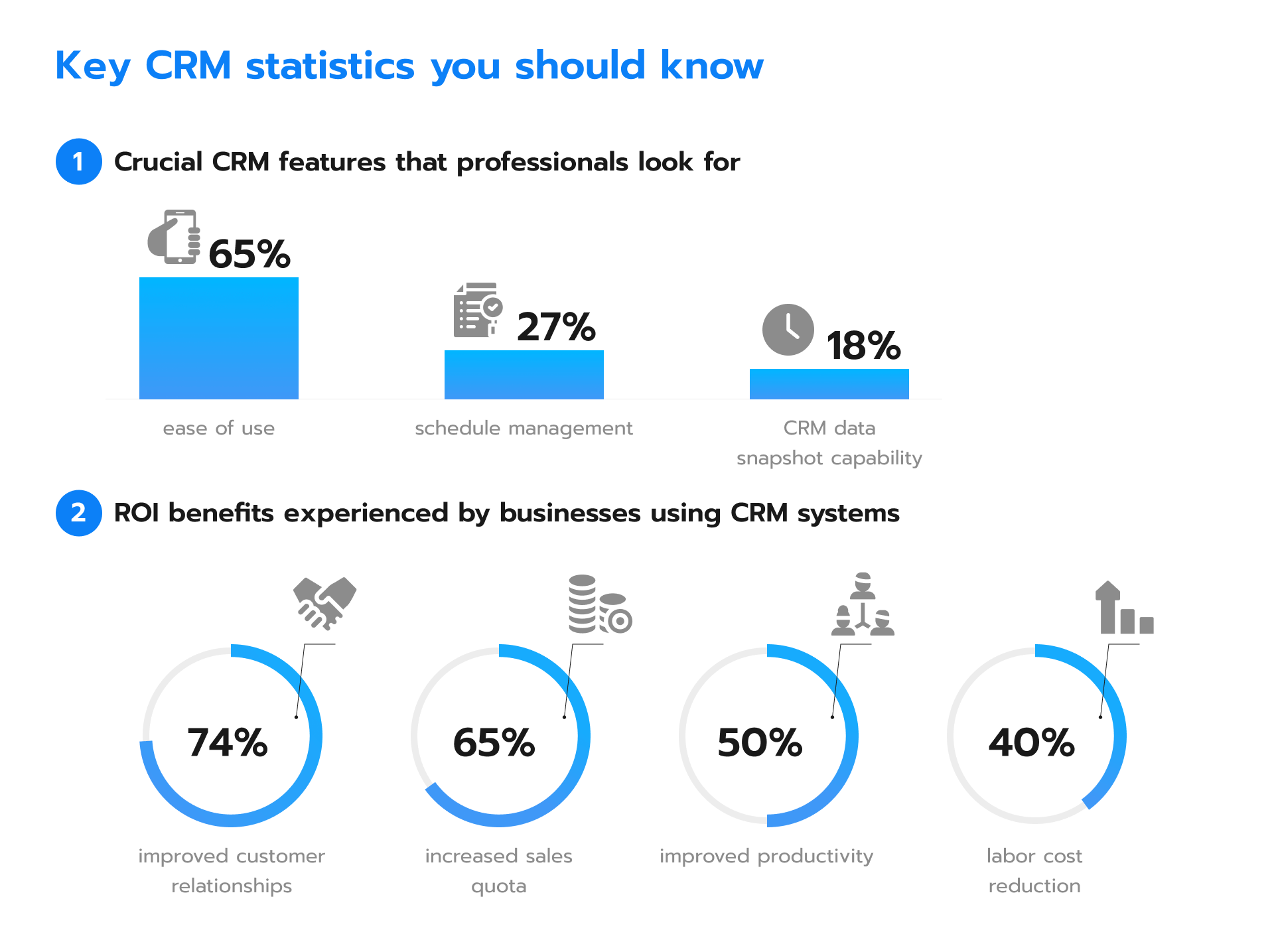Avenga can help you integrate custom Salesforce solutions into your business operations as smoothly as possible. Learn what Salesforce integration brings to the table and what are the processes behind it.
The world of customer relations management (CRM) is growing and evolving rapidly, as 91% of the organizations with more than 10 employees now use CRM systems. According to Finances Online, the CRM software market is expected to reach a market value of over $40B by 2023. Salesforce currently captures one-third of the world’s CRM users. Figure 1. Global CRM software market stats
Figure 1. Global CRM software market stats
Being the world’s leading CRM, Salesforce stands out thanks to its flexibility as well as its endless possibilities for customization and integration with third-party platforms. The majority of professionals prefer Salesforce because of its simplicity, but it also provides a number of useful features and benefits that are critical to the efficient performance of sales departments.
If you are looking for ways to close more deals, want to boost the efficiency of the sales funnel, or improve customer relations and conversion, the possibility of a Salesforce integration should be on the table. Let’s see what the benefits of integration with Salesforce are and how you can set this process up with the help of a reliable integration partner. 
Figure 2. Key CRM statistics you should know
What is Salesforce integration?
Salesforce integration is the process of combining the functionality of Salesforce with other applications to create a unified user experience. You can mix all the benefits of third-party solutions with the vast capabilities of Salesforce in order to give your teams a perfect selection of features pertaining to both platforms.
Whether you want to integrate Salesforce into your ecosystem or to add new functionality to your Salesforce-powered CRM, you will face the issue of combining the data between two platforms and switching between data sets while working on certain tasks. Such integration gives you a unified and centralized platform to work with.
Benefits of Salesforce integration
Apart from being more convenient to use, integrations in Salesforce give you a number of tangible benefits that can help you take your business to a new level. According to Salesforce reports, integrations offer an average boost in revenue of up to 20% and an ROI increase of 50% within one year. When you add a 52% increase in lead volume, a 34% boost in sales revenue, and a 27% rise in lead win rates here, the benefits of Salesforce start to look even more staggering.
Improve productivity
It is quite common to see sales reps working with data sets from both Salesforce and third-party platforms. For instance, some sales reps might use accounting software like QuickBooks to track inventory, customer information, and sales. QuickBooks and Salesforce amass vast quantities of information that can be critical for sales reps. Switching from one platform to another to compile all the information would, thus, take a considerable amount of time.
Integration between the two platforms would solve this problem and cut the time spent on compiling data sets, which leads to a 44% performance boost in sales teams. This is just one of the Salesforce integration examples, but it showcases how a unified platform can save time and improve the productivity of your teams.
Access data from different sources
Salesforce brings different systems together allowing your teams to interact with data pertaining to different departments across your business. Data from HR, accounting, sales, ERP, and even on-premise software like Oracle, SAP, and more can be combined and intertwined thanks to the capabilities of Salesforce.
Improve decision-making
You cannot make informed decisions when data remains in the siloes and that is where Salesforce gives you a 360-degree overview of the data. Having access to the data, you can apply analytics dashboards to analyze the data and make informed decisions based on new insights. Thanks to the streamlined real-time data flow, you can aptly respond to the changing trends.
Automate workflows
Salesforce integrations can help you automate many workflows within your organization. Automation allows you to reduce human involvement in repetitive and monotonous tasks. It will also decrease the number of human errors. Figure 3. Key CRM business benefits
Figure 3. Key CRM business benefits
Overall, integration with Salesforce allows for a seamless and error-free flow of data across different departments and automates data synchronization. Most enterprises work with various software for enterprise resource planning, communication, accounting, data management, and other purposes. Salesforce bridges the gaps between these systems and integrates them into a single infrastructure that boosts business performance and improves ROI.


 Figure 1.
Figure 1. 
 Figure 3.
Figure 3. 






